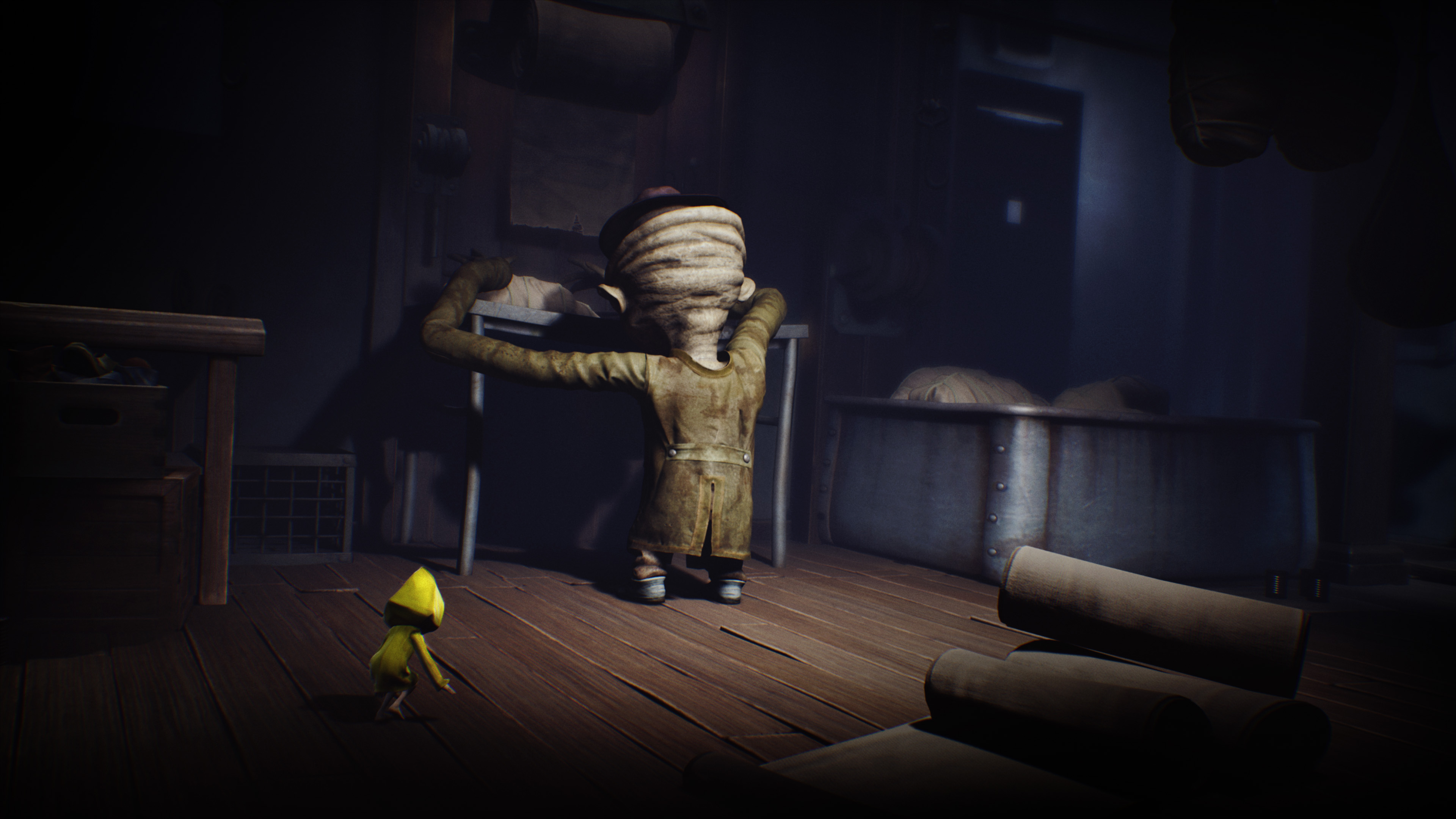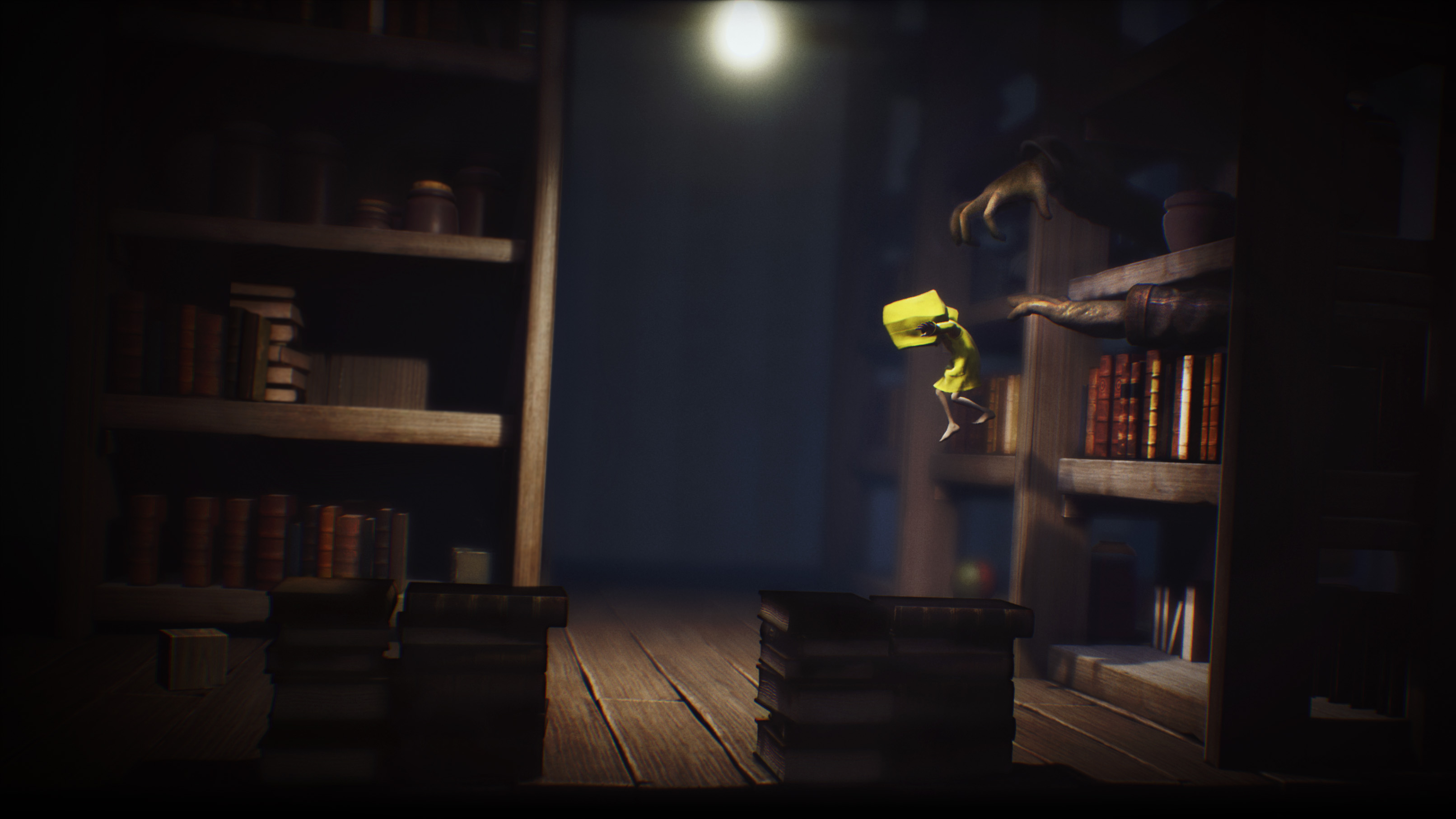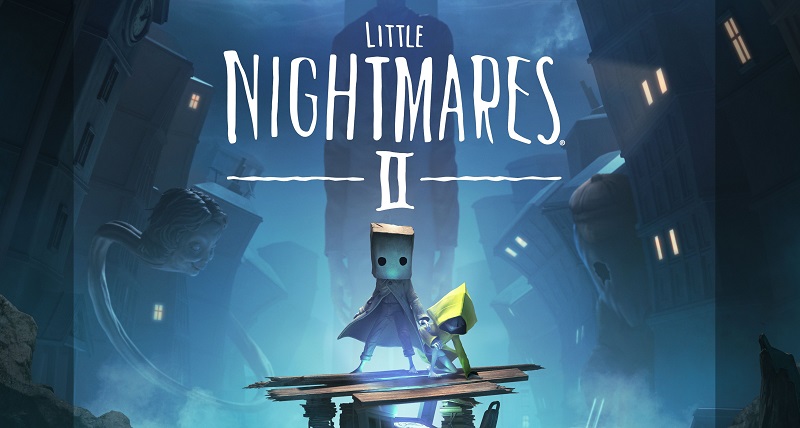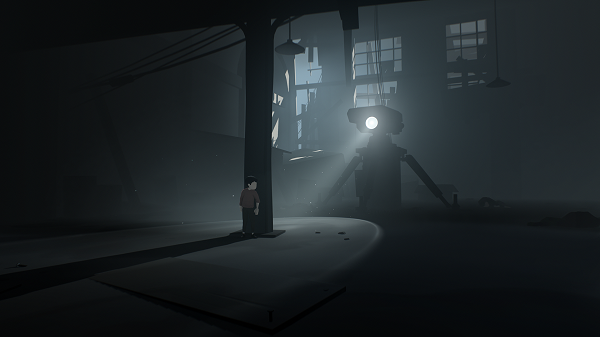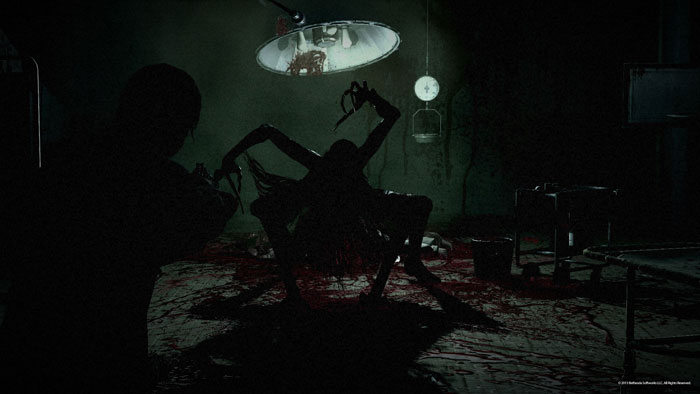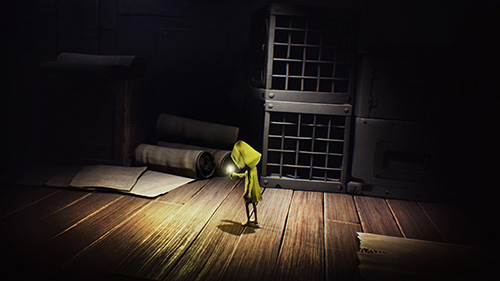
I wish I could pin down the genre of Little Nightmares. It would certainly make filling out the rating info at the top of the article easier. It’s got all the trappings of a survival horror game, but with no real survival horror gameplay. It’s got similarities to puzzle platformers like Inside and Limbo, as it challenges you to traverse melancholic and creepy environments, but it feels far less structured than those titles. Defying genre isn’t necessarily a bad thing, as a game can form its own gameplay style to fit the mood and narrative its trying to weave. But if wielded clumsily, it can also make a game feel muddled, or bland, and while Little Nightmares certainly has some outstanding visual and audio traits, as a game and interactive experience it only just gets by.
Little Nightmares, originally and fittingly known as Hunger, presents its story entirely through your own observation of its world, and interpretation of its events. It helps to look on the website to get some character descriptions, but there is no dialogue nor tutorial in-game to explain the proceedings, trusting the player to rely on subtext to decipher what’s going on. On the one hand, the developer Tarsier Studios respect for players’ intelligence is admirable, but on the other there isn’t really a lot going on in Little Nightmares.
You play as Six, a nine-year old girl in a yellow raincoat, who has apparently been stolen away and trapped inside The Maw – a giant vessel and processing factory, with hunger as its core essence. It’s unclear whether Six is tiny, or whether The Maw and its inhabitants are giant, but either way Six’s escape forces her to cross paths with twisted characters such as The Janitor, The Twin Chefs and The Lady who runs the entire operation. The story and cycle of hunger is relatively straight forward and easy to understand for players, but much like the game itself doesn’t seem to offer much for those who want to delve deeper.
Little Nightmares is a simple platformer, allowing Six to creep around shallow rooms in three dimensions, but always presented as a kind of stage (with the fourth wall missing). Six can run, crawl and grab objects, although the controls to do any of these things are clumsy and often make proceedings much more difficult than they need to be. Six’s jump is quite small and ineffective, while the perspective makes it difficult to line up gaps or narrow walkways effectively. It’s a common strategy in horror games to make the protagonist feel underpowered and unsuitable for their situation, but the spongey-feeling controls simply make things more frustrating.
The main draw of the game is its detailed and creepy visuals, striking a unique style that sits somewhere between CGI, claymation and illustration. There’s more than a whiff of Tim Burton (who I imagine is a whiffy man) about the game, and it certainly sticks out as one of the more-memorable looking games I’ve seen in a while. The sound design too makes this a game best played with headphones, where the ambient creeks, muffled groans and unmentionable sounds of The Maw surround you, creating a foreboding and tense atmosphere.
All of this detail invites you to explore every nook, every cranny, but nine times out of ten you’ll walk away disappointed. Cavernous large rooms, seemingly perfect to hide away tid bits about the plot or collectibles, are just designed to be bypassed as quickly as possible, or circumvented with a simple puzzle. There are a small amount of collectibles to find in the form of dolls and small ‘Nome’ creatures, but the game teaches you pretty early on that examining rooms in close detail rarely leads to much reward, and you’re usually best off finding the simplest way out.
Little Nightmares is largely bereft of scares too, relying instead on drawing out its foreboding atmosphere as long as possible. Characters like The Janitor and Twin Chefs are creepy, but not frightening, with the only real scares coming from The Lady’s appearance near the end of the game. The atmosphere that Little Nightmares is going for – the constant feeling that something horrible and terrifying is always going on, just off-screen – is certainly executed well, but there is little payoff for it throughout.
At its low price point of AU $34.95 in retail stores, including the game’s soundtrack, Little Nightmares actually sits at a reasonable price-point with its five-plus hours length, and I think it very well may attract a cult following. The gameplay, visuals and narrative don’t intertwine and pay off in the way that great platformers like Limbo and Inside do, but as a horror-themed experience, it is very unique. If Beetlejuice is your favourite movie, you love browsing DeviantArt for Addams Family fanart and you have a Tumblr about goth fashion, Little Nightmares might be just up your alley. Just don’t expect a lot beyond its striking presentation, and try not to get too frustrated when you miss a jump and fall to your death for the sixth time.
-Unique, striking visuals -Creepy sound design -Dark, tense atmosphere
-Clumsy controls -Very few actual scares -Invites but offers little reward for exploration

